A kind of plants like brachychiton (Brachychiton) is directly related to the Sterculiaceae family. This genus unites about 60 plant species. They are found naturally in Oceania, Australia, and Southeast Asia.
This genus is represented by rather large trees that have a thickening in the lower part of the trunk. It is there that the accumulation of nutrients necessary for the normal growth and development of the plant occurs. The tree begins to consume them after the weather conditions become unfavorable. It was the external feature of the brachychiton trunk that gave rise to the second name “bottle tree” among the people.
This tree is becoming more and more popular with flower growers every year. And they like it for an unusual appearance and relative unpretentiousness.
Brachychiton care at home
Illumination
For a plant, a western or eastern window is best suited. It can also be placed near the south window, but in this case the plant will need to be shaded from the direct midday rays of the sun. If it is placed near a north-facing window, then the tree will not be able to grow and develop properly due to lack of light. A newly purchased plant must be accustomed to bright lighting gradually, the same applies to brachychiton after wintering.
Temperature regime
In the spring-summer period, brachychiton needs warmth (24-28 degrees). With the onset of the autumn period, the temperature is gradually lowered, and in winter they keep the tree cool (from 12 to 16 degrees). The room should be well and regularly ventilated at any time of the year.
How to water
Exceptionally soft water is used for irrigation, which must first settle for at least 24 hours. In the warm season, watering should be abundant; on hot days, water after the top layer of the substrate has dried. With the onset of the autumn period, watering is reduced, and in the winter time it is necessary to water carefully, avoiding either overdrying or overflow of the soil. At this time, the plant has a dormant period, and it needs coolness and moderate watering.
Spraying
You do not need to moisten the plant from a spray bottle. In winter, the tree should be removed away from heating appliances.
Fertilizer
Brachychiton needs regular feeding in the spring-summer period 1 time in 3 weeks.For this, special mineral fertilizers are used. In autumn, as well as in winter, it is not necessary to feed the plant, since at this time the fertilizers applied can only harm it.
Pruning
In springtime, the tree needs to be pinched and pruned. Thus, you can form a beautiful crown, getting rid of the branches that have stretched out over the winter.
Brachychiton transplant
The transplant is carried out only if necessary, for example, when the overgrown root system ceases to fit in the pot. When transplanting, make sure that the root collar is not buried. While the plant is young, it should be transplanted once a year; older specimens need this procedure, as a rule, once every 3 or 4 years.
Earth mix
Loose soil is needed for planting. So, a suitable soil mixture can consist of leafy soil, sand and peat, taken in a 1: 2: 1 ratio. And you can mix turf, leaf and humus soil, as well as peat and sand, taken in equal shares.
Reproduction of brachychiton
Brachychiton is usually propagated by seeds and apical cuttings. The most common reproduction is by apical cuttings. After cutting, they should be treated with growth promoting agents and then planted. For planting, use a mixture consisting of equal parts of sand and peat. They put it in a warm place (at least 24 degrees), spray it systematically, and cover the container with cellophane.
Pests and diseases
Can settle shield and whitefly... If the room has low humidity, then it is quite possible that spider mite.
Possible problems
- It is forbidden to smoke in the room where the plant is located, because it reacts negatively to tobacco smoke.
- Dry spots appeared on the foliage - due to exposure to direct sunlight. With a lack of light, the tree can also get sick.
- Rot has appeared - too abundant watering.
Types of brachychiton with photo
Maple-leaved brachychiton (Brachychiton acerifolius)
This species is represented by branched evergreen trees, which can reach 35 meters in height and 12 meters in width. Shiny, leathery leaves are painted in a rich green color and grow in length up to 20 centimeters. They have 3 to 5 lobes. The red cup-shaped flowers are rather small (up to 2 centimeters in diameter). They are collected in large panicle-shaped inflorescences. The plant blooms in the summer.
Brachychiton rock (Brachychiton rupestris)
It is popularly called "bottle tree", and that's all because the trunk of this plant from a distance is very similar to a bottle of impressive size. In height, it can reach 15 meters, and the lower part of the trunk can be up to 2 meters in diameter. In this part of the trunk, liquid accumulates, which is wasted with the onset of drought. If the tree grows at home, then it has a more compact appearance.
Brachychiton varifolia (Brachychiton populneus)
This evergreen highly branching tree has a fairly voluminous trunk. So, it can reach 20 meters in height and about 6 meters in width. Oval, dark green leaves with a glossy surface are about 12 centimeters long. On the same plant, you can see leaves with both 3rd and 5th lobes. The inflorescences in the form of a shield are shaped like panicles and are axillary. Small flowers (1.5 centimeters in diameter) are green, cream or pink in color. There are brownish or red spots on the surface of the petals. Bloom lasts from June to August.
Brachychiton multi-colored (Brachychiton discolor)
This plant can drop foliage. It reaches 30 meters in height and 15 meters in width. The thick and straight trunk has a pale green bark. The pubescent green leaves have 3 to 7 lobes and are broadly oval in shape. Their length is about 20 centimeters, and they are attached to the branches with rather long petioles. Axillary, very dense inflorescences in the form of a shield have the shape of a panicle. Bell-shaped pink or red flowers reach a width of 5 centimeters.Flowering continues throughout the summer.
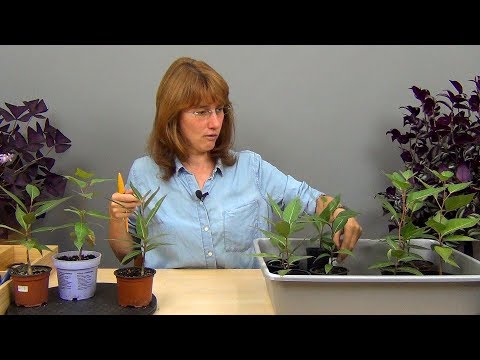

Watch this video on YouTube

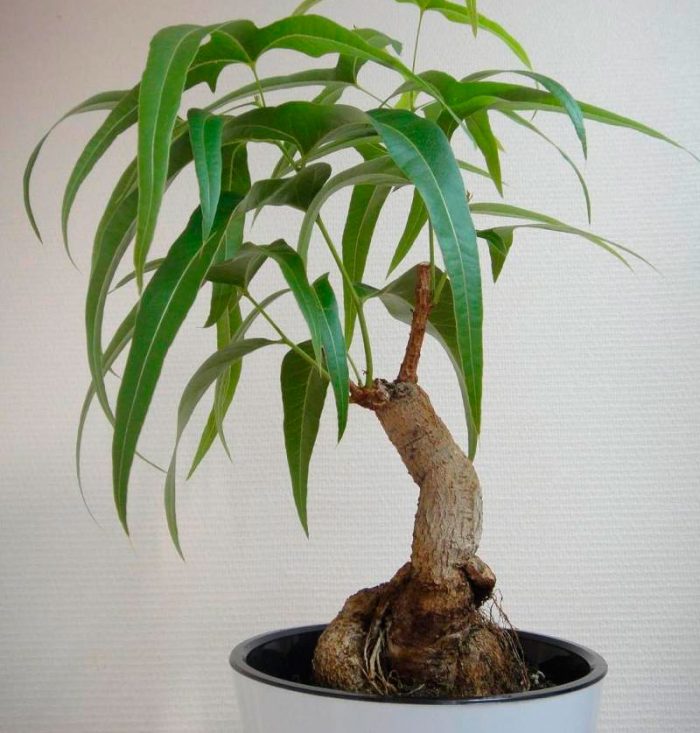
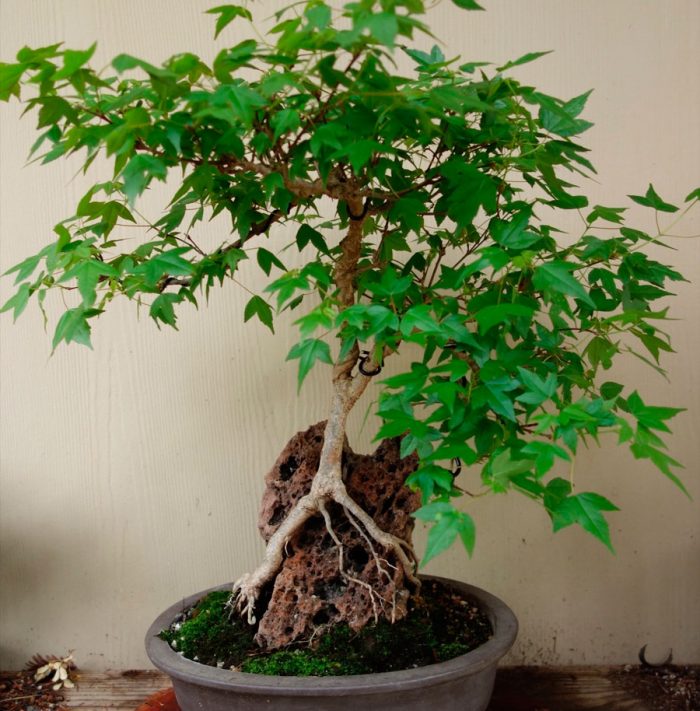


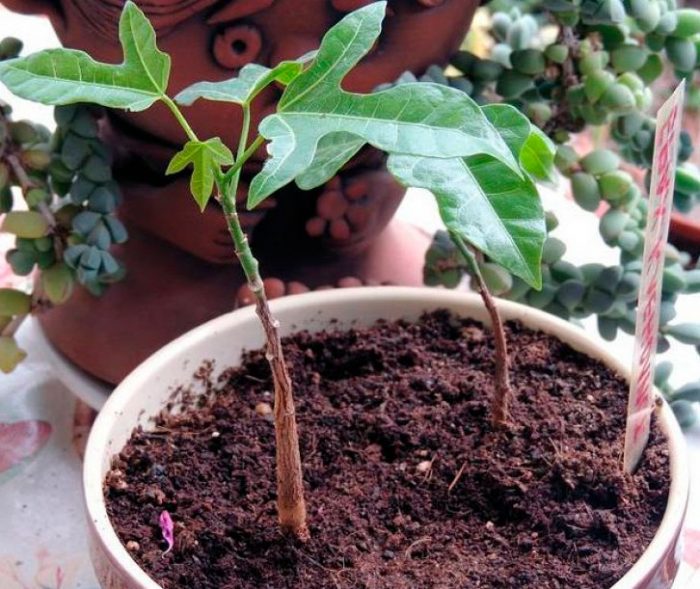
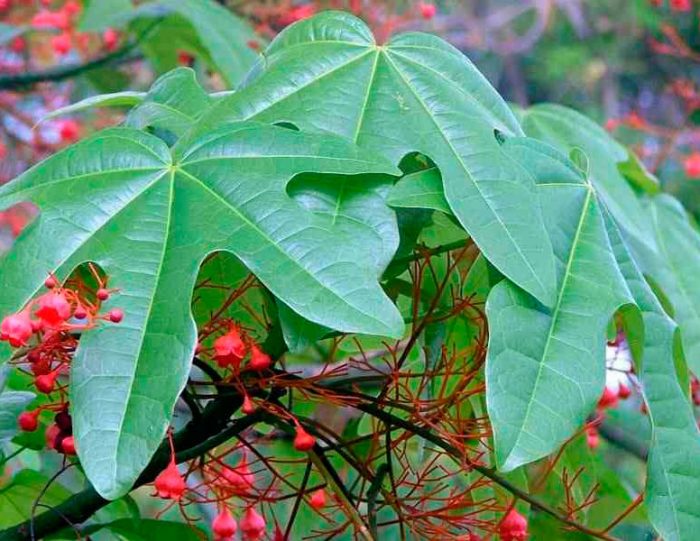
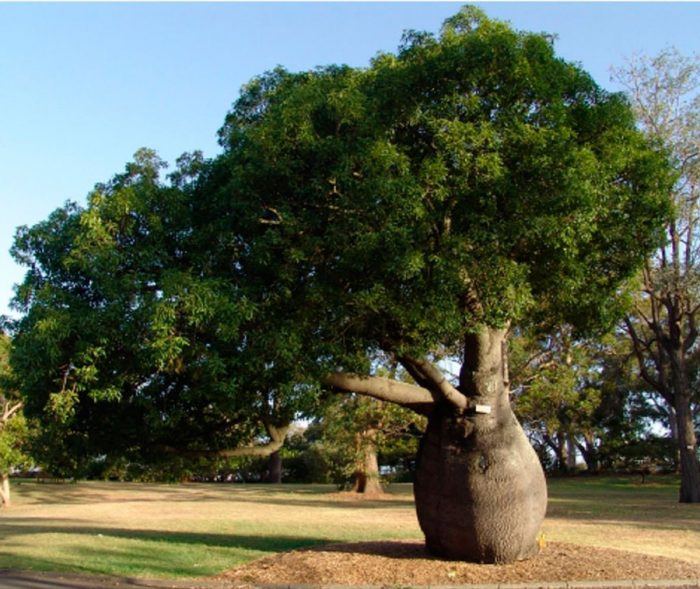
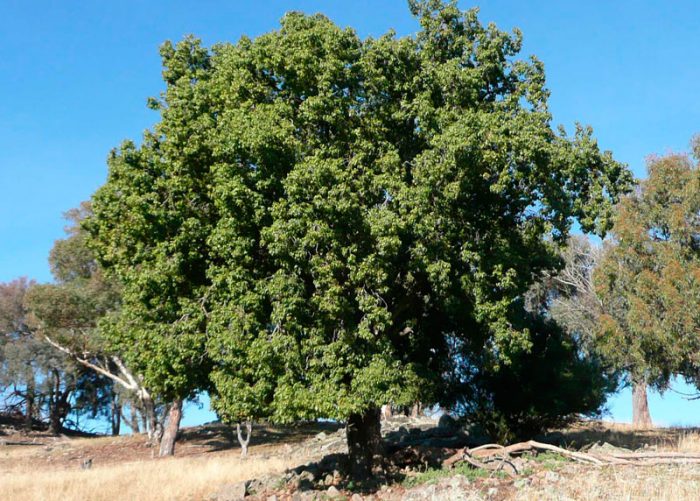

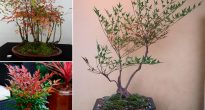


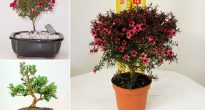
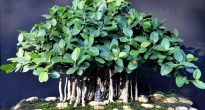
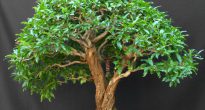
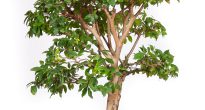

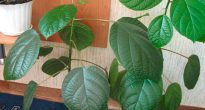

thank. wonderful sketch. very informative. I define the name of the tree, the seeds of which came from the Mediterranean and sprouted. advised to look at information about brachychiton. Your video is the cutest.